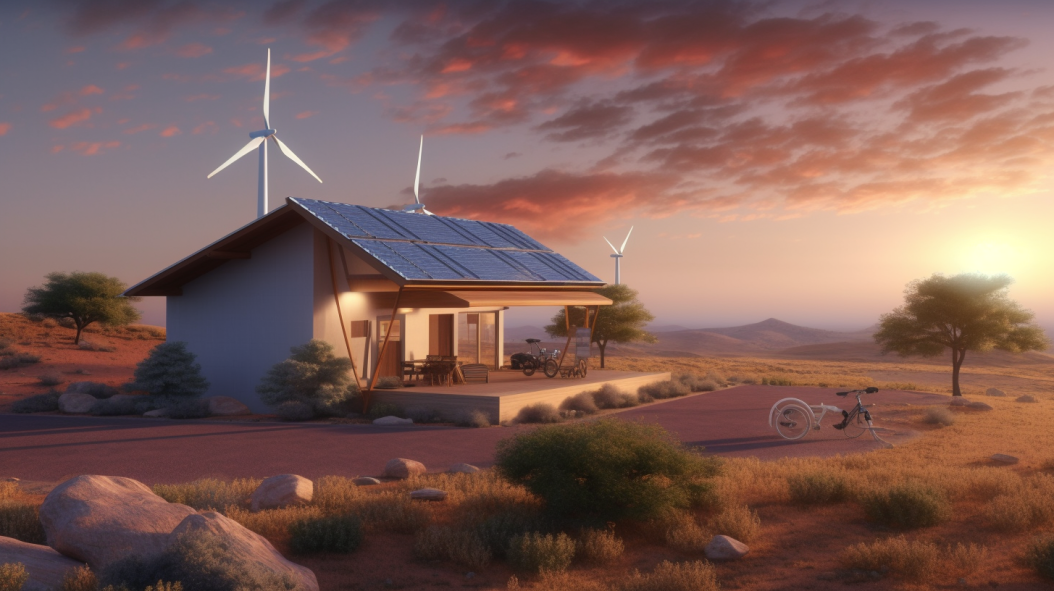Harnessing the Power of Wind and Sun: A Comprehensive Guide to Off-Grid Energy Installation

Introduction
In the quest for sustainable and independent energy solutions, off-grid energy installations have become increasingly popular. By harnessing the power of both the sun and the wind, it’s possible to create a robust energy system that can provide electricity even in the most remote locations. This article explores the feasibility, design considerations, and cost examples of integrating solar panels and wind turbines in an off-grid energy system.
Solar Energy: The Heart of the System
Components and Costs
- Solar Panels (5 kW): A typical residential solar panel system might require 20 panels, each costing around $200, totaling $4,000 for a 5 kW system.
- Inverters (5 kW): Essential for converting DC to AC power, inverters for a 5 kW system might cost around $1,000 to $2,000.
- Mounting and Installation: Expect to pay around $1,000 to $2,000 for mounting hardware and professional installation.
Considerations
- Location and Sun Exposure: The efficiency of solar panels depends on the location and angle of installation.
- Seasonal Variations: Solar energy can be lower during winter months, requiring additional energy sources.
Wind Energy: Complementing Solar
Components and Costs
- Wind Turbine (1-3 kW): A small wind turbine suitable for residential use might cost between $3,000 and $8,000, depending on capacity (1-3 kW).
- Tower and Installation: The tower and installation can add another $2,000 to $5,000 to the total cost.
Considerations
- Wind Patterns: Understanding local wind patterns is crucial for optimal turbine placement.
- Maintenance: Regular maintenance is required, which can add to the ongoing costs.
Energy Storage: Bridging the Gap
Components and Costs
- Battery Storage (10-30 kWh): A battery system capable of storing enough energy for a residential setup might cost between $5,000 and $15,000 for a 10-30 kWh system.
Considerations
- Capacity: The battery system must be sized to meet daily and seasonal energy demands.
- Lifecycle: Batteries have a limited lifecycle and may need replacement every 5-15 years.
Backup Options: Ensuring Reliability
Components and Costs
- Fuel or Natural Gas Generator (5-10 kW): A backup generator with a capacity of 5-10 kW might cost between $1,000 and $5,000, depending on capacity and type.
Considerations
- Fuel Costs: Ongoing fuel costs must be considered if a generator is part of the system.
- Environmental Impact: Consider the environmental implications of using a fossil-fuel-powered generator.
Conclusion: A Balanced Approach
Creating an off-grid energy system that combines solar and wind energy is not only feasible but can be a highly effective solution for energy independence. By understanding the local climate, energy needs, and carefully selecting and sizing the components, it’s possible to build a system that provides reliable energy throughout the year.
The total cost for such a system, capable of producing and storing 6-8 kW of power and 10-30 kWh of storage, can range from $17,000 to $42,000, depending on the choices made in each component. While the initial investment might seem high, the long-term benefits of sustainability, independence, and potential savings on energy bills make it a worthwhile consideration.
Consulting with a renewable energy expert and conducting a thorough analysis of the specific needs and conditions of the installation site will ensure a successful and satisfying off-grid energy experience.
Note: The costs and capacities mentioned are approximate and can vary widely based on location, specific requirements, and market conditions. Always consult with a local expert for accurate pricing and system design.